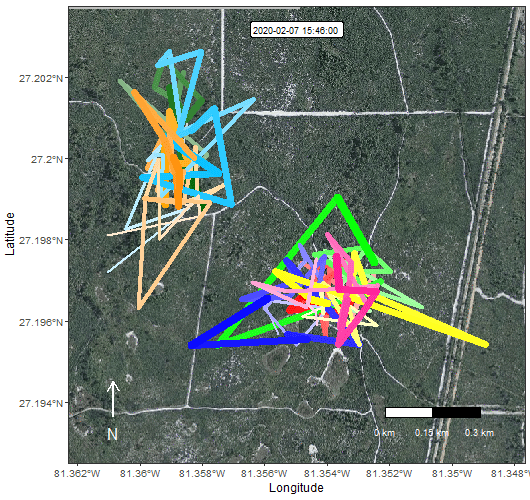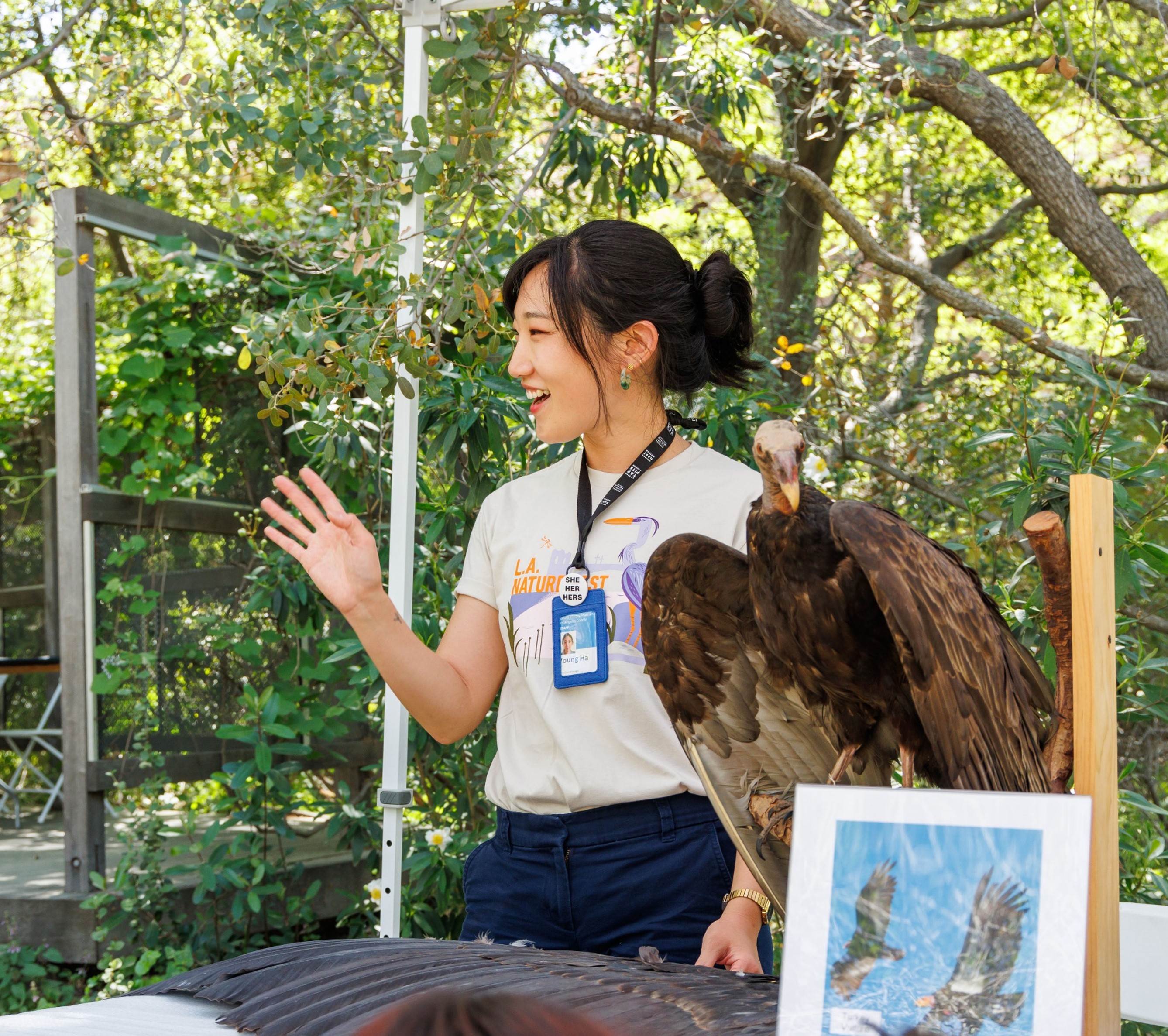Projects
Current projects
I am working on creating a Shiny app that will readily display and plot our collections database: LACM specimens
Projects from my PhD
Social and environmental predictors of natal dispersal
Natal dispersal refers to the movement from a natal site to a breeding site. It is a crucial life-history stage that affects organisms at both the individual and population level, ultimately resulting in spatially-structured population dynamics, gene flow, and species distribution. Dispersal is particularly important for Florida scrub-jays as short-distance dispersal has strong fitness benefits. This led to my interest in understanding what social and environmental factors best explain variation in dispersal timing and distance. Turns out that age and distance are negatively correlated, with younger jays dispersing farther distances. For males, low-quality natal territory and presence of stepfathers increased probability of dispersal and for females, low-ranking ones dispersed farther distances. Read more on my first first-author publication here.
Subordinate dispersal: Alternative pathways to dispersal for a cooperative breeder
Despite being known for their “blessedly simple” cooperative breeding system comprised of the breeding pair and offspring (Woolfenden & Fitzpatrick 1984), Florida scrub-jays exhibit exceptions to this norm with the presence of “adopted helpers”; unrelated helper jays that join the group and help with group-related duties (e.g. sentineling, provisioning young). I noticed that this occurs more frequently than was previously thought and decided to investigate more. Using long-term data, I aim to understand what ecological and social factors best describe the occurrence of this dispersal strategy and whether it is truly an alternative strategy with comparable fitness payoffs as opposed to staying at home as a natal helper. Our paper got accepted for publication in the Journal of Animal Ecology (2022) and can be found here, alongside this blog post.
Physiological costs of movement: is movement actually costly for a resident bird?
Dispersal is considered costly due to increased energetic costs, exposure to predators in unfamiliar landscapes, and aggression from territory-holding conspecifics, yet this is not well substantiated in the field. I measured body condition in nonbreeding jays that are actively seeking breeding territories by collecting body mass changes and blood samples for oxidative stress measures to see if increased movement affects body condition. I predicted that either 1) movement negatively affects body condition or 2) those in high body condition or those able to maintain high body condition are able to engage in pre-dispersal movement. This work was possible thanks to the Vitousek Lab at Cornell. Read our manuscript in review on BioRxiv.
Prospecting behavior, an understudied and elusive precursor to natal dispersal
Prospecting, the process of gathering social and environmental information on surroundings prior to dispersal, is prevalent in numerous avian systems. While we suspect this information allows individuals to disperse into high quality territories, its exact mechanisms are unknown. What are these birds looking at while they move through foreign lands? How do they decide where to settle? Is there individual variation and if so, why does it occur? My research aims to elucidate this process and understand its fitness implications. I use an automated tracking system developed by Cellular Tracking Technologies to quantify daily prospecting movement at a fine-scale.

Northern orioles: Bullock’s orioles have become more orange over six decades
In collaboration with Drs. Vanya Rohwer and Russell Ligon, we investigated apparent color change in the Bullock’s Oriole Icterus bullockii in relation to the Baltimore oriole I. galbula, which frequently hybridize in the Great Plains. Opportunistically using a historic sampling event where both species were sampled in 1950s and re-sampled in the 2010s, we measured colorimetric variables of specimens and built avian visual models to measure the degree of change. Read our published paper here.
